

| HOME | Exhibitons: |
Saab wakes up all kinds of feelings in Finns, and nearly all Finns have some kind of experiences of Saab. The whole Finland has been driving by Saab from the former president Kekkonen to an ordinary man. Although you may not own a Saab, you may have been on it. The Saab cars have been familiar sights in the roads of Finland, and for example the Finnish police used Saab as the police cars. Saab has become well-known for its individual and advanced design, and it has been consired as a safe car that suits the Finnish circumstances.
Although the manufacturing in Finland has finished, the Saab hobby is still going on strong. It started from the special features of the car, Saabisms that increased the interest and brand loyalty towards Saab.

Saab was manufactured in Finland for over 30 years. Manufacturing the car brand in Finland started in 1968, when a car factory was established in Uusikaupunki. The name of the factory was "Oy Saab-Valmet Ab" and it was the joint company of Valmet and the Swedish Saab-Scania Ab.
When establishing the car factory in Finland, the objective was to create car industry related knowhow and a network of part suppliers and offer new employment. When establishing the factory, the principle was to manufacture Saab cars mainly for the Finnish markets, but the doors were opened also for export. In 1992 the company was transferred completely to the ownership of Valmet, and in 1995 it became Valmet Automotive Oy.
The history of Saab in Finland ended in 2003, when the manufacturing of the Cabriolet was moved to Graz, Austria. There were altogether 738 135 Saab cars manufactured in Finland in those 34 years.
Saab from Finland 1968 – 1988
Watch the video. (mp4)
Watch the video. (wmv)

In the mid-1980s, Oy Saab-Valmet Ab started to invest on product development and it became one of the fastest growing operations of the company. The decision was based on the widening the cooperation of Saab-Scania and Saab-Valmet, that included also the product development. In 1987 the Saab-Valmet's product development centre was ready, where the experts of design, model engineering, prototype manufacturing and production technology worked especially with the further development of the Saab 900 and Cabriolet.
The product development of Saab was intense cooperation, where several teams worked at the same time from the idea of the product to the serial production. The design department's responsibility included the design tasks of the serial products, visualisation of products, visual models and wax models. The target of the design work was to produce design proposals, versions and models as presentation images, scale models as well as full-size visual and operation models. Of all planning and drafting, only about a tenth was implemented. The product development time of the car was long in total, but the actual part of design was relatively short. The appearance of the new product was one of the first agreed matters which could not be affected after that. The designer had to be able to observe the construction, production and marketing views already in the design phase.
The Design manager Eero Miettinen was responsible for the car design at Saab-Valmet during 1985 – 1998. He participated actively in every phase of the work and cooperated with the other functions of the product design and different departments of the company. Miettinen thinks that cars are complicated to design. He thinks that a good designer is a real multitalent, who knows a lot about the operation of the car and masters both the technology and the design. Naturally, every designer wants to make beautiful products, but it is not possible to concentrate only on the stylish body and interior when designing them. The car design shall take several different factors into account of which many seemed conflicting with each other. Regarding Saab, there was the image of the Swedish parent company and the design philosophy focusing on safety and long life. The safety, comfort and practicality points were deciding on the form and appearance of the car, and functionality guided the design. At the same time, a new style had to be found, that gave the car its own individual look. The design is often the only competition advantage. The look features build the image that sells the product.
Oy Saab-Valmet's product development centre in 1987
Watch the video (mp4)
Watch the video. (wmv)

The Saab 96 has the most characteristics of all the Saab models. It was a 2-door small coupé that became the first real success product of the company. The brand sold a lot in Finland as the 96 suited well the Finnish winter conditions. It had an effective heater and it was running well also in deep snow. The Saab 96 was also the first car model that was manufactured at the Uusikaupunki car factory. The car that was finished on Friday 13th November 1969, with the register number EKA-96 ("First-96"), was presented to the former president Urho Kekkonen. Against the common belief, this car that was given for the president Kekkonen was not the very first Saab that was manufactured in Finland. They wanted to make sure that the car model is working perfectly before giving it to the president.
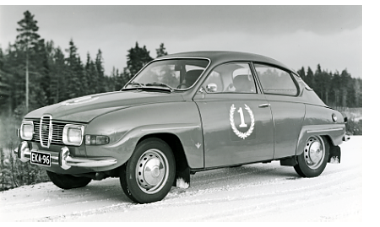 EKA-96 |
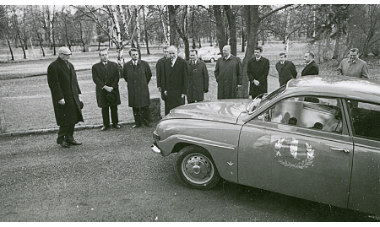 EKA-96 was presented to the former president Urho Kekkonen. |
The design of the Saab 96 is related to the older Saab models. The 96 was the last model originating directly from the first 1950 Saab 92. The Saab 92's airplane wing-like appearance lasted as the basic solution of the Saab model for 30 years i.e. until 1980, when the production of the Saab 96 was finished. Although the 96 reminded closely the Saab's previous models, especially regarding the design of the bow, it had, however, a more modern look compared to its predecessors as well as larger boot space and interior. Also the so-called flow-through air-conditioning was a new invention, which prevented the windows from freezing. Until the latest models, the 96 had the overrunning clutch and column gearchange. The aerodynamic design by the Swedish designer Sixten Sason gave the Saab 96 its individual appearance, whose design leaves nobody cold. You either hate or love its unique design. Therefore the Saab 96 has several nicknames: kajakki (kayak), syöksysämpylä (dashing roll), kuurakyttyrä (frosty hump), peräpuikko (suppository), porkkanasorvi (carrot drill), mutakiila (mudwedge), sukellusvene (submarine), puukenkä (clog), kivilinko (rock sling)...
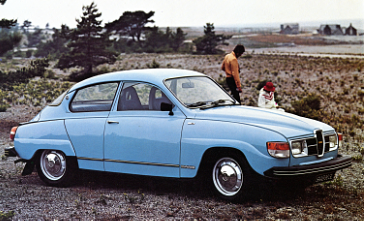 Saab 96 GL | 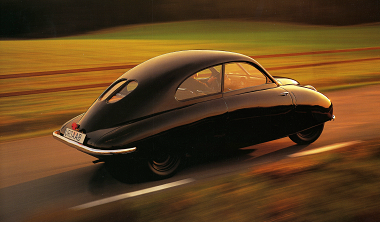 The first Saab of all times – 92001 |

The development work of the new model that was larger than the Saab 96 had started already in the middle of the 1950s, but it was already 1967 before it was finished. Then the upper middle-class, front-wheel drive car model Saab 99 was introduced. The car production started in August 1968 after thorough tests. The first Finnish Saab 99 was manufactured at the Uusikaupunki car factory on 23rd December 1969. Originally, the Saab 99 was purposed to be kept in production as a basic model only for a short time, but starting the production of the new model took so long that it remained in production with its various versions until 1984.
The Saab 99 was originally a whole new production model that was not based on any earlier Saab models. The Saab 99 became the last model designed by the head designer Sixten Sason. Sason borrowed the forms from the French Citroën, and the unique forms of the car got the nickname Le Canard (The duck). The body was low at the bow and wedge-shaped at the rear. The gauge of the car was exceptionally large, which made it a stable card to drive. The new model was marketed as the "Swede with broad shoulders" i.e. as a strong and durable family car.
The model was developed during its whole production time. The Combi Coupé version by Björn Envall was introduced in 1974. The design of the Saab's new body model raised a great interest, and it became one of the most well-known Saab models. The Combi Coupé was the intermediate form of a coupé and a station wagon, and the model had a very large boot regarding the size of the car. The body model was greatly approved by the customers, because it was spacious, practical and aerodynamic. The specialities in the Saab 99 were the parking brake effecting on the front tyres, which effected on the separate brake drums, as well as the ignition key between the seats, which could also be found in the later Saab models.
 Saab 99 GL |
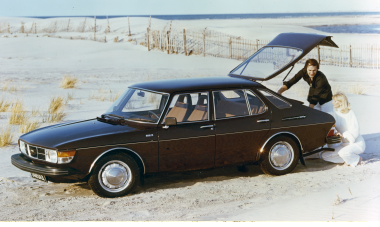 Saab Combi Coupé |

When Saab introduced the white Saab convertible in the 1983 Frankfurt car show, the serial production of the car had not yet been decided. The great interest of the exhibition audience gave the final confirmation for the production decision, and manufacturing the Saab 900 Cabriolet started at the Uusikaupunki factory in the beginning of 1986. The success of the convertible was above all expectations, and the Saab 900 Cabriolet became especially popular in the United States. The convertible production was increased at the Uusikaupunki factory due to the strong demand, but the demand overrun the capacity at times that one had to wait for the model even over a year. In all, there were 198 032 convertibles manufactured in Uusikaupunki during 1986 - 2003. In 2003 the Cabriolet manufacturing was transferred to Graz, Austria.
The Saab 900 Cabriolet was a classical convertible with 4 seats that had a fully electronic textile roof. Unlike some other convertibles that were changed to convertibles, the Saab was designed as a convertible from the beginning, as well as for use in four seasons. The basis for the model was the 2-door body of the Saab 900 that had been manufactured in Uusikaupunki. All Cabriolets are not so-called slanted bows, because the first models were manufactured as traditional vertical bows. The Finnish car design¬ had a crucial meaning in the implementation of the convertible, because the Saab-Valmet's development department participated in the design of the convertible from the beginning in cooperation with Saab-Scania and American designers.
Saab-Valmet accepted a large part of the Cabriolet design, and the maintenance design of the car was transferred completely for Saab-Valmet in 1987. This meant responsibility for keeping the international competitiveness of the product and it required a great effort on the design work. The further development of the Saab 900 convertible became Saab-Valmet's the most important product development project and the car development work continued at the Uusikaupunki factory. The design of the new generation Cabriolet wanted to be started soon, because the objective was a new convertible beside the old model. In 1988 the manufacturing of the Saab 900 Cabriolet concept car was started. The purpose of the concept car was to research new ideas and improvements, such as the seatbelt attachments, body reinforcements and new door and the side lining. The new generation Saab 900 Cabriolet was introduced in 1994. According to a legend, the Saab's main designer Björn Envall had sighed with admiration, when he saw the forms of the new convertible beauty designed by the design manager Eero Miettinen.
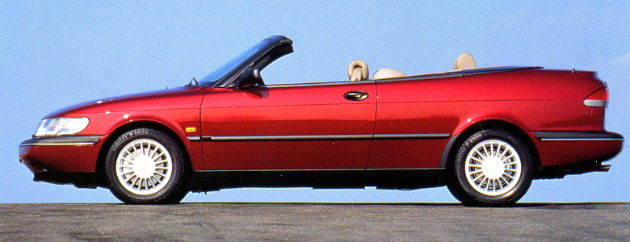

The Saab cars have introduced several original solutions, Saabisms, during their existence. They have been some kinds of insights and specialities through the times that have increased the safety and comfort of Saab. Many of them have been implemented in other car brands, too. The Saabisms have made Saab a car that is considered individual and safe.
Here are a few Saabisms from the past years:
| 1960 | The Saab 96 had a flow-through air-conditioning through the cabin. | |
| 1962 | Seatbelts became standard several years before the Swedish legislation regulated them as mandatory. | |
| 1967 | The Saab 99 had the ignition key between the front seats. | |
| 1969 | Automatically switched headlights in 1970 model. The lights switched on and off as the car was started. | |
| 1970 | The headlight wipers in the 1971 models. | |
| 1971 | Expansion buffers damping collisions and electronically heated front seats were introduced in the models of 1972. | |
| 1972 | The steel side collision protections of doors, halogen lights and a ceiling made of one piece and damping the collision impact were introduced in 1973 models. | |
| 1974 | Roller seatbelts became standards. | |
| 1978 | Filter for the cabin, a great relief for people with pollen allergies. | |
| 1981 | The wide angle parts of the external mirrors in the 1982 models. The German car union awarded the mirrors with a safety award. | |
| 1982 | Asbestos-free brake pads in all 1983 models. | |
| 1991 | Freon-free air-conditioning device in 1992 models. | |
| 1996 | The Saab's active head support system was introduced, that reduces remarkably the injuries to the cervical spine at rear-end collisions. | |
| 1997 | The Saab 9-5 had air-conditioned front seats. |
